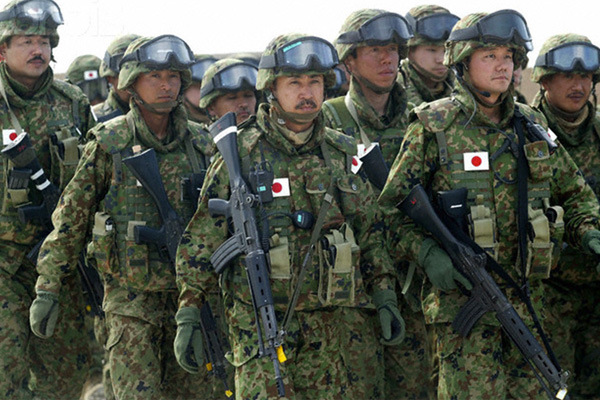In a 2007 speech by Prime Minister Stephen Harper announcing the construction of the new Arctic Offshore Patrol Ships (A/OPS), he affirmed, “Canada has a choice when it comes to defending our sovereignty over the Arctic. We either use it or lose it.” Last week, I discussed how Canada’s procurement efforts to this end are off to a “slushy start”. The A/OPS program seems to be without a raison d’être with no year-round capabilities in the arctic and a featherweight armament. The heavy icebreaker planned to be procured for the Canadian Coast Guard is merely a replacement for another vessel and not likely to be enough to meet the overall demands of the expanding parameters of Canada’s arctic sovereignty mission. What’s worse, both are expected much later than originally planned, with the former to have its first steel cut in 2015 and the latter nearly a decade later.
[quote align=”center” color=”black”]”The National Shipbuilding Procurement Strategy (NSPS), including the A/OPS and the new Canadian Coast Guard heavy icebreaker, are part of an effort to revive a dormant shipbuilding industry”[/quote]
[captionpix align=”left” theme=”elegant” width=”300″ imgsrc=”http://natoassociation.ca/wp-content/uploads/2014/03/B97235966Z.120131007182408000G2S3TLD3.11.jpg”]
The focus of this article, however, is to explore how Canada’s recent procurement efforts directed toward its arctic sovereignty can be considered path-breaking. In Part One, I indicated that presence is the most fundamental facet of ensuring Canada’s interests are met with respect to its arctic sovereignty. The planned naval hardware to execute this presence may be seen to be lacking in terms of function, affordability, and timeliness, but there could be a more positive story to tell from a longer-term perspective.
The ships being procured under the National Shipbuilding Procurement Strategy (NSPS), including the A/OPS and the new Canadian Coast Guard heavy icebreaker, are part of an effort to revive a dormant shipbuilding industry with languished skills and capabilities. One of the chief components of this strategy is to eliminate the “boom and bust” cycle characteristic of this sector of the economy, but this endeavour is expected to be very costly. Creating a world-class domestic shipbuilding capacity does not happen overnight, and it certainly does not happen cheaply. The most explicit expression of this is the A/OPS “definition contract” awarded to Irving Shipbuilding for $288 million. This is more than twice the total amount other countries have spent on entire build contracts for similar projects (though it should be noted that comparing procurement projects between countries is not a straightforward affair). The only clear answer given thus far for the astronomically high numbers is that there is a premium that must be paid for growing a domestic capacity of this scale.
These short-term costs may be outweighed, however, by the long-term gains provided by having a home-grown shipbuilding capacity. In a February 2013 paper by the Canadian Defence and Foreign Affairs Institute (CDFAI), it was argued that the roughly 30 years of consistent work provided for by the NSPS would very likely garner the necessary efficiencies to achieve such an elusive goal. Is there a big difference to the bottom line for domestic versus international procurement regimes? Citing a study by engineering consultancy group Mott MacDonald commissioned by Industry Canada, the paper goes on to say that so-called “cheaper” foreign shipyards often come with an added 25% price tag for in-service support costs, which can end up representing upwards of 60% of the total purchase price over the lifetime of the asset in question. When considering the bottom line, it is also important to factor in the significant local and national economic benefits in the form of employment and increased export prospects. In the long-term then, these A/OPS and the arctic icebreaker, as problematic as their development may be, are part of a capabilities-expanding mission whose effects spill over from the procurement project itself. One can bet that in the future the Canadian shipbuilding industry will be prepared to execute more timely, affordable, and capable arctic vessels.
[captionpix align=”left” theme=”elegant” width=”300″ imgsrc=”http://natoassociation.ca/wp-content/uploads/2014/03/Canadian-Frigate.jpg”]
The fact that the navy can be expected to take a more active role in the arctic through its new vessels is also an important change. In fact, it marks the first sustained investment in the arctic maritime environment since the 1950s, during which time the HMCS Labrador became the first warship ever to navigate the Northwest Passage. This peak in interest ended in 1954 when the vessel was transferred to the Canadian Coast Guard, marking the beginning of that organization’s icebreaking operations. The presence of special purpose arctic naval vessels and the RCN will be a boon for interoperability between military departments operating in the North. Operations like NANOOK draw on every corner of the “primary-force-generators of the Canadian Armed Forces” in exercises designed in large part to assert Canadian sovereignty. In order to ensure the continued and focused presence of the RCN in the North, however, the planned deep-water port at Nanisivik, Nunavut must be completed. Currently mired in delays in the handover from the private company that previously operated the site, and already vastly over budget, the port is currently relegated to a fuel stop status with on-call staff.
In order to see Canadian procurement efforts, planned or already undertaken, as path-breaking, one must be prepared to see things from a long-term perspective. There is, of course, significant risk in moving ahead with projects like these, and they may well take a turn for the worst. There is some solace in seeing things as such, however, as the race for the arctic is by no means a sprint. This kind of competition is a marathon won through presence and sustained attention by policy makers. Those dissatisfied with the path-breaking perspective, seeing these developments as ‘slush-making’, will have to look to the equally important ‘soft power’ projects set up to enfranchise and invigorate local communities and economies. These are the best short-term bets Canada can make to stake its sovereign claim to the North.




